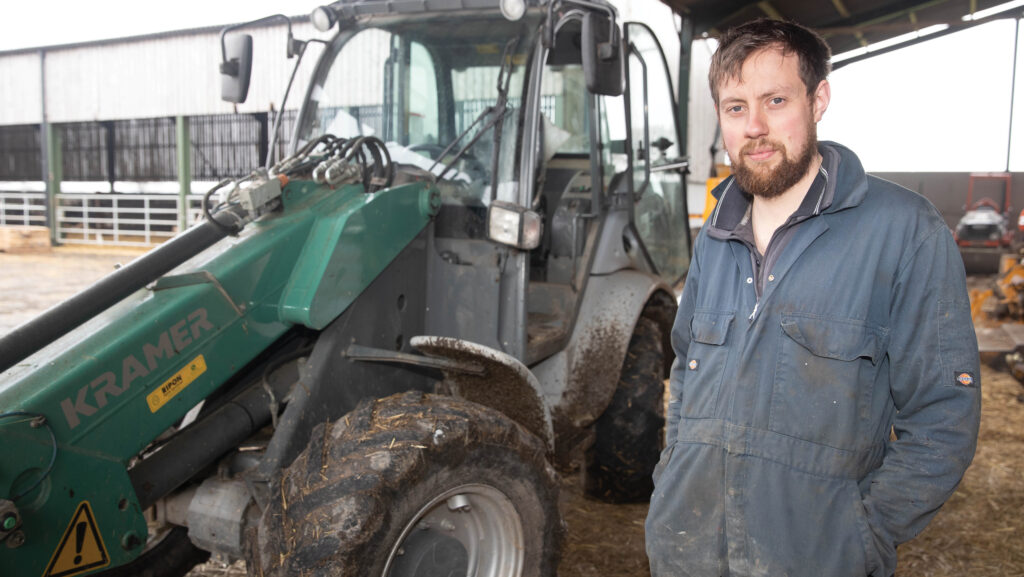Farmer Focus: Timing just right for overseeding clover
 Tom Hildreth © Tim Scrivener
Tom Hildreth © Tim Scrivener A dry spring always seems to be a productive one. Slurry, grass seed, and getting the hang of farming with robots seem to have taken my time this past month.
Slurry sort of goes without saying. It is always in the back (or front) of a dairy farmer’s mind – especially when the lagoon has not grown as the cow numbers have.
See also: Advice on establishing and growing clover in grass leys
Slurry capacity will be increased later this year when I build my concrete slurry store.
This means I won’t need to be out on 1 February 2026 spreading on an arable farmer’s stubble field destined for sugar beet or potatoes – I can save it for growing grass and dropping my bagged nitrogen use.
This past week has been an excellent time for overseeding clover into last year’s new seeds.
Unfortunately, a heavy chickweed burden in our grassland means that clover would be killed (in its first year) when the chickweed is sprayed off, so I harrow it into the sward the following year instead.
It is a bit of a fine art with the harrows: too dry and you don’t scratch the surface, and leave the seed on top, too wet and we make a mess of the surface and soil structure.
So there are about three days in spring when the harrows create a tilth and give the seeds just enough cover, but also enough moisture to give them a start.
A quick pass with the rollers gives us our seed-to-soil contact.
Just nine weeks ago, we began milking through three Lely robots, and the work we put in at the start is really paying off now.
Our day starts at the same time it used to when we milked in the parlour – in the shed for 6.30am.
The first job is to collect the only two cows that won’t walk into the robots. Both are mid- to late-lactation first calvers, and both are stubborn as hell.
I’m hoping they will find their own way when they calve down again.
By breakfast, all cow jobs are done and the rest of the day – bar an hour for one of us in the evening – is whatever the day has in store for us.
Our aim is to finish at 5pm.

